|
||||
|
||||
![]()
|
||||
|
||||
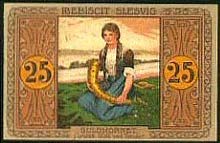 N.1000, P.UNL 25 Pfennig 19.2.1920 Tondern |
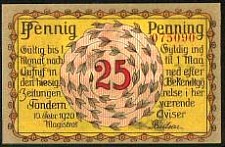 Back |
|||
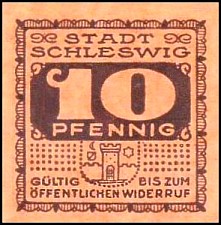 N.1002, P.UNL 10 Pfennig 31.5.1920 Schleswig City Notgeld Issue |
 Back |
|||
| The above Schleswig City issue more correctly belongs in a Post WWI German section, since it lies outside the plebiscite area. However, we do not yet have such a section and will move it once that section is available. | ||||
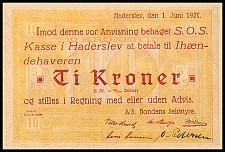 N.1004, P.UNL 10 Kroner 1.6.1927 |
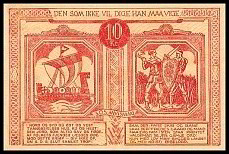 Back |
|||
|
|
||||
![]()
|
I n 1864, Denmark ceded Schleswig (which the Danes call Slesvig) and Holsteinto Prussia and Austria (both came in 1866 to Prussia, and were included in the unification of 1871). The allocation of Holstein to Germany was never questioned by the Danes, Schleswig was contested. Originally - in the middle ages - Danish land, during the 16th to 18th century Schleswig and Holstein had a common history, separate from and often in conflict with Denmark. The common parliament of Schleswig-Holstein chose (lower) German as their official language, and a considerable segment of the Schleswig population developed, over the centuries, a Schleswig-Holsteinish / German identity, while a considerable part of the peasantry, especially in the northern section of Schleswig, felt Danish. Thus, the Schleswigers in the 19th century, were split in a camp with a German, and a camp with a Danish identity (actually there is a third, Northern Frisian camp). The treaty of 1864 foresaw the questioning of the population of Northern Schleswig by plebiscite (if they wanted their land to be part of Germany or Denmark); the Germans failed to hold that plebiscite. After Germany lost WW I (in which Denmark took no part) that plebiscite was enforced, only in parts of Schleswig. Two thirds of Schleswig remained German, with the city which gave the area her name; the northern section was separated and united with Denmark. The area remaining with Germany is called Sønderjylland by the Danes; the German Bundesland Schleswig-Holstein has a Danish minority, which is guaranteed a seat in the state legislature. Schleswig history provided courtesy of WHKMLA |
![]()
© Garry Saint, Esquire 1999- 2014